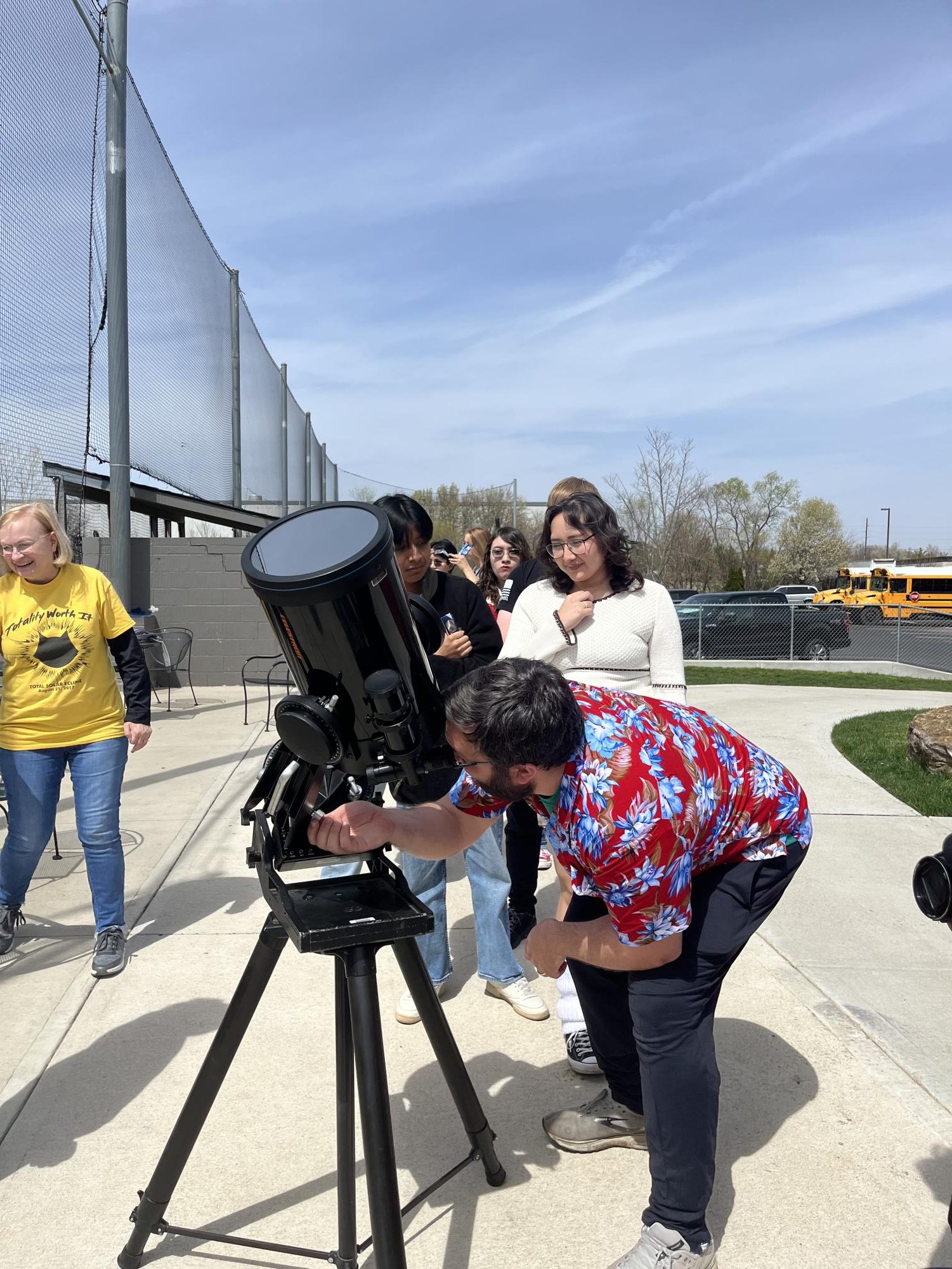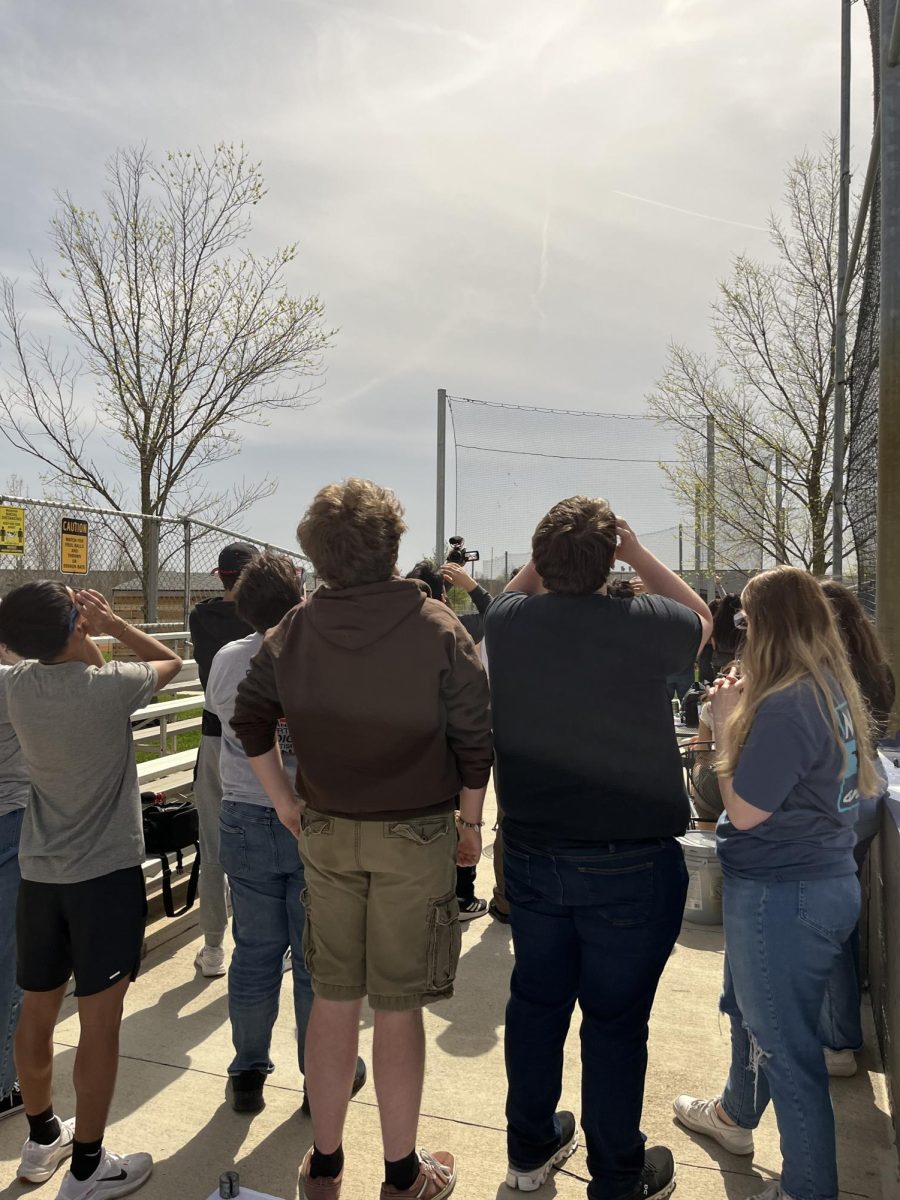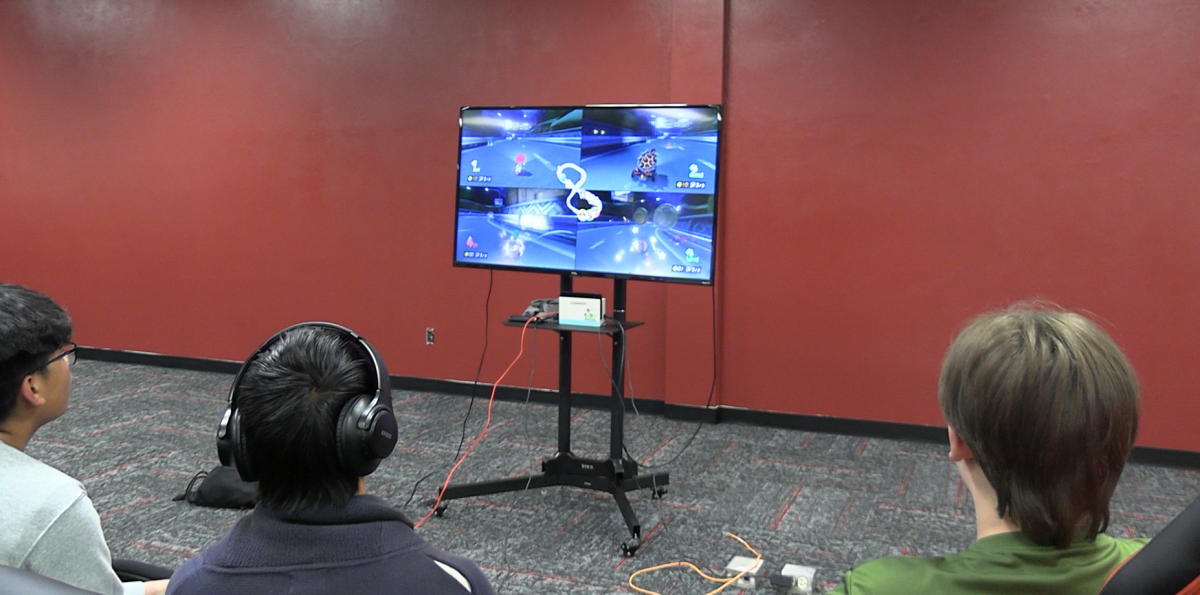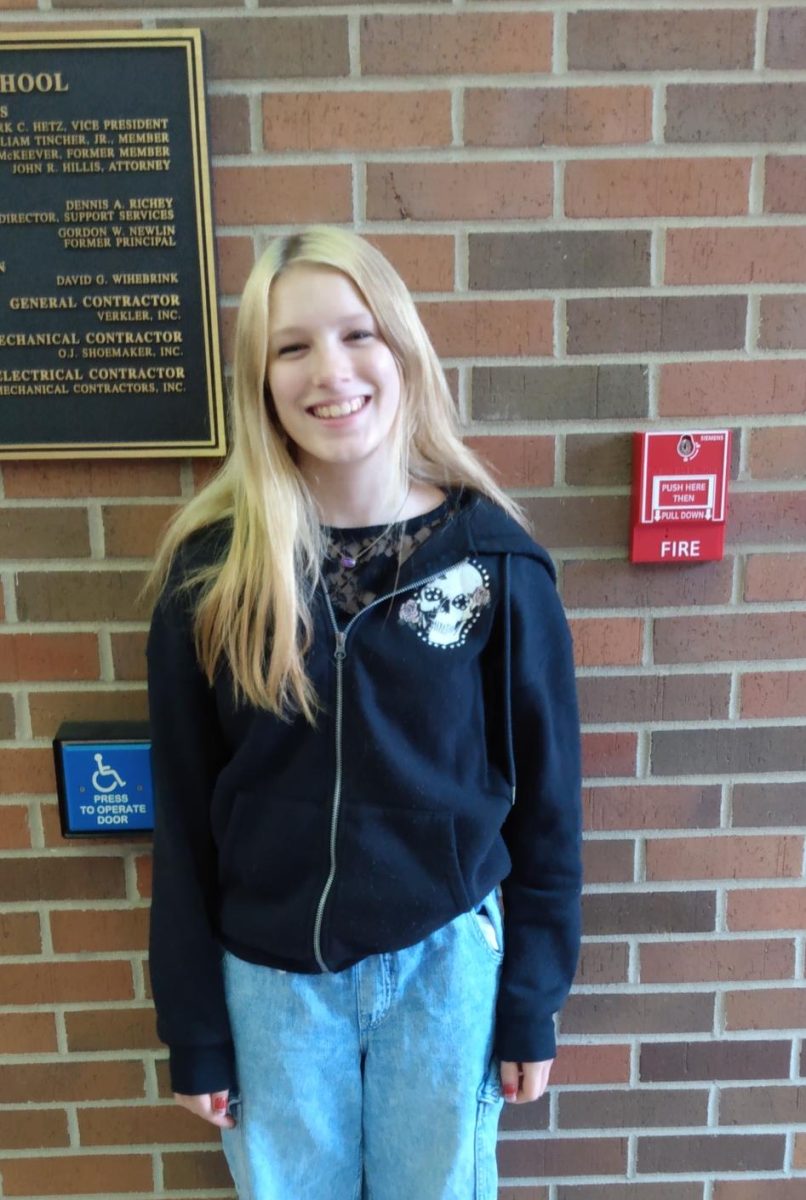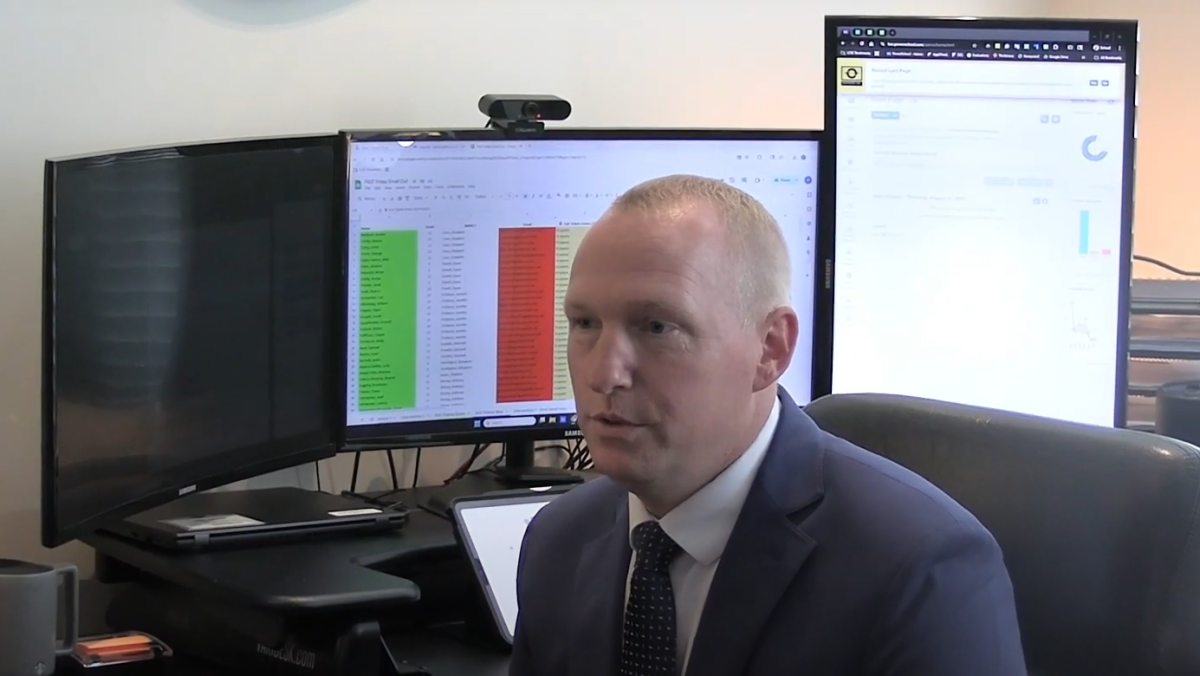On April 8, astronomy teacher Andrew Bever took students from his classes on a trip to Westfield, Indiana to see the spectacular solar eclipse. It was the last solar eclipse visible from the United States for the next 20 years. People all over the world traveled to great lengths to see this natural phenomenon.
“During a solar eclipse, the sun slowly gets covered up by the moon. For our eclipse, the moon was able to fully cover the sun in an event called a total solar eclipse. If the moon were a little further in its orbit, the moon would not completely cover the Sun and you would get an annular eclipse,” Bever said.
Bever, students, and chaperones traveled to the Roundtripper Academy in Westfield about an hour and 15 minutes away to see the solar eclipse reach totality. Bever loved the lead-up to the eclipse but loves watching totality most.
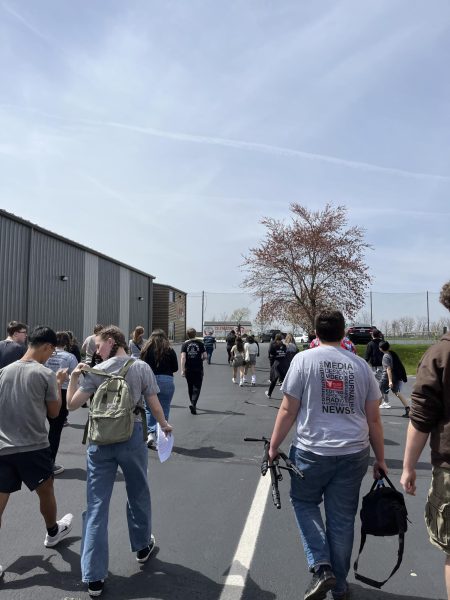
“I enjoyed the lead-up to the eclipse a lot, but I always love the reactions people have when the sun is completely covered. Totality is something I don’t think I’ll ever be able to get enough of,” Bever said.
The “lead up” Bever was referring to was the time the group spent waiting for the eclipse to reach totality. Bever enhanced the experience by bringing multiple materials and activities the students could use to examine the process more closely.
“I brought a lot of materials. First, I brought meter sticks that were taped to each other at 90 degrees so we could see the difference in fuzzy and crisp shadows caused by the differently sized axes of the sun.”
“Next, I brought colored paper to see the effect that low light conditions have on colorful objects, specifically red and green. I also brought big white sheets to project various things onto.”
“I also brought objects with lots of holes in them to project the eclipse onto the ground, like a colander and a cheese grater. Lastly of course I brought my telescope with a solar filter on it so we could check out the Sun as it progressed towards totality,” Bever said.
Students each had their own favorite ways to examine the progression of the eclipse. Senior Alexis Enyeart was watching it through the telescope.
“My favorite activity was to see the eclipse through a telescope. Not only was it interesting to see the sun from a new perspective I can’t typically see, but it was also amazing to see the moon slowly covering the sun, as well as seeing the solar flares reach off of the sun. It was also beautiful to see how the light bent around the moon.”
Senior Phoenix Cripe liked using the colander.
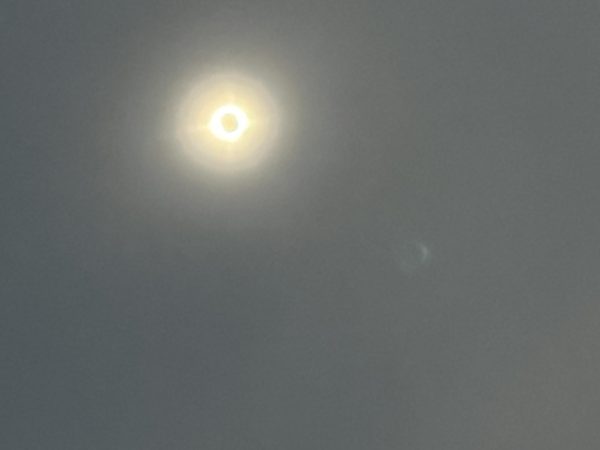
“My favorite was holding a colander slightly above the ground to see the shape of the eclipse at that moment projected through the little holes in it. I liked this one because I enjoyed seeing it change along with the slow changes of the eclipse.”
Once the eclipse did eventually reach totality, the staff and students alike were absolutely mesmerized. The group witnessed the moon entirely covering the Sun for about three minutes and it made for a memorable experience.
“The extreme temperature and lighting changes were most fascinating to me and shocked me to see how drastic the change was. I wasn’t expecting the amount of change I truly experienced, but it was shocking to see and feel how fast everything around me changed,” Enyeart said.
Cripe expressed the same wonder at the effects of the eclipse.
“Seeing the moon slowly and finally cover the sun entirely and seeing the shift between it being so bright to so dark so fast was really cool to me.”
Overall, the trip and experience was a success for everyone involved and truly a once-in-a-lifetime opportunity. The next solar eclipse is predicted to happen on August 23, 2044, an experience Bever wants everyone to take advantage of.
“The main thing I wanted the kids to experience was how weird the eclipse makes you feel. I have never experienced anything that makes me feel the way totality does. There is a sense of awe and a strange version of fear I get when it happens and I want others to experience it. Awe is hard to come by sometimes, and this is a great way to feel it.”


